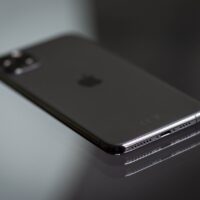The choice of a name for a product, especially one as significant as a web browser, is a critical marketing decision. It can influence public perception, brand identity, and ultimately, the product’s success. Apple’s Safari browser, introduced in January 2003, is no exception. The name “Safari” is evocative, distinctive, and purposeful. This article delves into the reasons behind naming Apple’s browser “Safari,” exploring the historical context, marketing strategy, and the thematic symbolism that the name embodies.
Historical Context of Safari’s Launch
Apple’s Technological Renaissance
In the late 1990s and early 2000s, Apple Inc. was undergoing a major transformation. Under the leadership of Steve Jobs, who returned to the company in 1997, Apple began to revitalize its product line with innovative designs and cutting-edge technology. This era saw the launch of the iMac, iPod, and eventually, the iPhone, each contributing to Apple’s resurgence as a tech giant.
The Need for a Proprietary Browser
Before Safari, Mac users primarily relied on Microsoft’s Internet Explorer, which was the default browser for Mac OS as part of a five-year agreement between Apple and Microsoft made in 1997. However, as Apple sought to distinguish itself and enhance its user experience, the need for a proprietary web browser became evident. This led to the development and eventual launch of Safari in January 2003, during the Macworld San Francisco conference.
The Symbolism Behind “Safari”
Exploring the Digital Landscape
The word “safari” originates from the Swahili language, meaning “journey” or “expedition.” It is commonly associated with expeditions into the wilderness, especially in Africa, where adventurers explore uncharted territories and observe wildlife in their natural habitats. By naming its browser “Safari,” Apple created a metaphorical link between exploring the vast, untamed internet and the adventurous spirit of a real-world safari. This metaphor underscored the browser’s role in helping users navigate and discover the digital landscape.
A Fresh, Invigorating Perspective
In a market dominated by browsers with more technical or utilitarian names like Internet Explorer and Netscape Navigator, the name “Safari” stood out for its freshness and imaginative quality. It evoked a sense of adventure and curiosity, appealing to users’ desire to explore the web with ease and excitement. This branding move aligned well with Apple’s broader strategy of positioning its products as innovative and user-friendly.
Marketing Strategy and Brand Alignment
Consistency with Apple’s Brand Values
Apple has always emphasized simplicity, elegance, and a user-centric approach in its products. The name “Safari” fits seamlessly into this branding ethos. It is simple, easy to remember, and evocative of a positive, adventurous experience. The name also reflects Apple’s philosophy of making technology accessible and enjoyable, transforming mundane tasks into delightful experiences.
Differentiation from Competitors
Naming the browser “Safari” also served as a strategic move to differentiate Apple’s offering from its competitors. At the time of Safari’s launch, the browser market was crowded with names like Internet Explorer, Netscape Navigator, and Opera. These names, while functional, lacked the emotional and imaginative appeal that “Safari” brought to the table. By choosing a name that stood out, Apple was able to capture attention and convey a sense of innovation and uniqueness.
Technological Innovation and Performance
Speed and Efficiency
From its inception, Safari was designed to be a fast and efficient browser. The name “Safari” implicitly promised an experience that was swift and smooth, much like a well-planned safari journey. This promise of speed and efficiency was backed by the technical prowess of the browser. Safari’s introduction of the WebKit rendering engine, which was open-sourced by Apple, played a crucial role in making web browsing faster and more reliable. This technical innovation aligned perfectly with the adventurous and seamless exploration implied by the name.
Security and Privacy
Safari has also been at the forefront of promoting user privacy and security, another aspect that resonates with the connotations of the name. Just as a safari guide ensures the safety of explorers in the wild, Safari as a browser aims to protect users from the dangers of the internet. Features like Intelligent Tracking Prevention and robust encryption reinforce this aspect, ensuring users can browse with confidence and security.
Cultural and Emotional Resonance
Evoking Positive Imagery
The name “Safari” evokes images of exotic landscapes, wildlife, and the thrill of exploration. This positive imagery can create an emotional connection with users, making their browsing experience feel more enjoyable and engaging. By tapping into these cultural and emotional connotations, Apple succeeded in creating a strong, positive brand association for its browser.
Alignment with Apple’s Global Outlook
Apple’s choice of the name “Safari” also reflects its global outlook and appeal. Safaris are internationally recognized as adventures that cross boundaries and cultures, much like the internet itself. This global perspective aligns with Apple’s vision of creating products that resonate with users worldwide, transcending geographical and cultural barriers.
The naming of Apple’s browser as “Safari” was a deliberate and strategic decision that played a significant role in its branding and market positioning. The name embodies the spirit of exploration and adventure, aligning perfectly with Apple’s ethos of innovation, simplicity, and user-centric design. It differentiates the browser in a crowded market, evokes positive cultural and emotional imagery, and reinforces the technical strengths of speed, efficiency, and security. Through this thoughtful naming, Apple not only created a distinct identity for its browser but also set the stage for its long-term success and integration into the daily lives of millions of users worldwide.
Read More –










